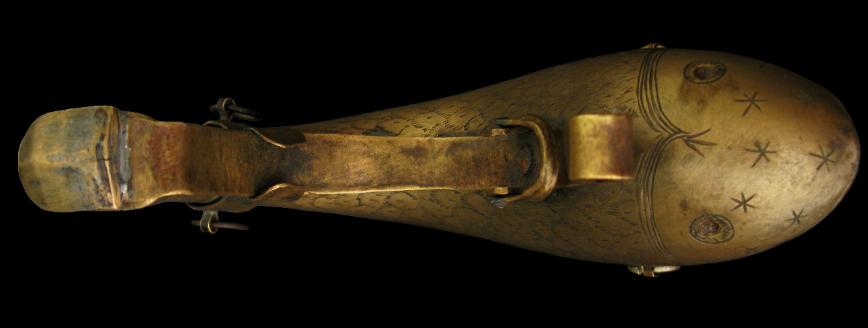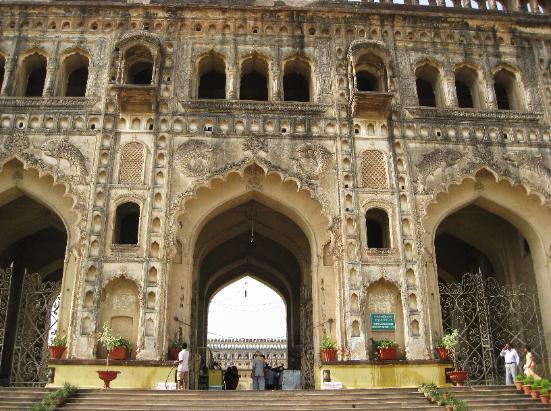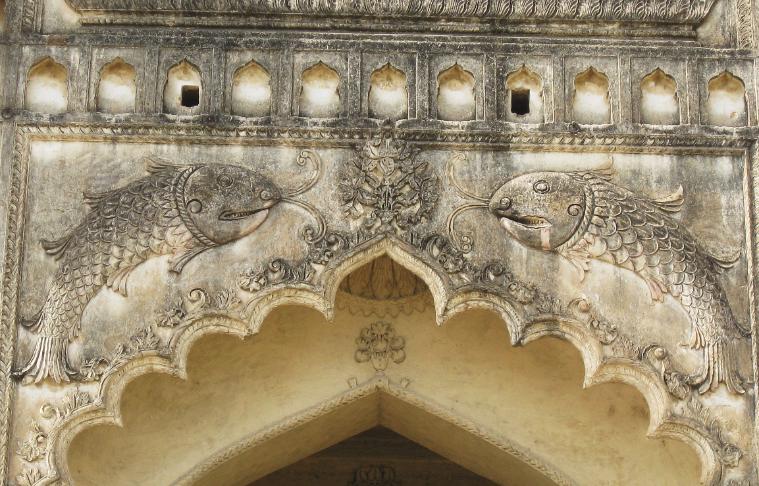
701. Islamic Weapons- Lucknow Priming Flask
Engraved Brass Fish-Form Priming Flask
Lucknow, India
circa 1800
length: 15cm, height: 14cm
This unusual priming flask is in the form of a fish – the style of fish employed as the royal emblem of the Nawabs of Oudh whose kingdom centred on the northern Indian city of Lucknow. The form of this flask is similar to a royal silver gilt Oudh standard featuring two fish, now in the David Collection in Copenhagen. (See the images below of the Nawabs’ fish emblem as it is employed in the stucco cladding of the Bara Imambara complex in Lucknow.)
The flask has a rounded head and an erect tail which serves as the neck of the flask. Facial features and scales are engraved on. The original spring lever opening mechanism is present and there are four rings through which cords can be tied to secure the flask.
Priming flasks were used by artillerists to store and pour finely ground gunpowder which was needed to set off a loaded gun. A small quantity of powder would be poured into the nozzle of the gun. This was then ignited either by a spark from a flintlock mechanism or more commonly in India, by flame from a matchlock.
References
The David Collection standard is illustrated in von Folsach, K., Art from the Wold of Islam in the David Collection, 2001, p. 339.
Inventory no.: 701
SOLD





Images from the Bara Imambara complex, Lucknow, showing the use of the Nawabs of Oudh fish emblem.

